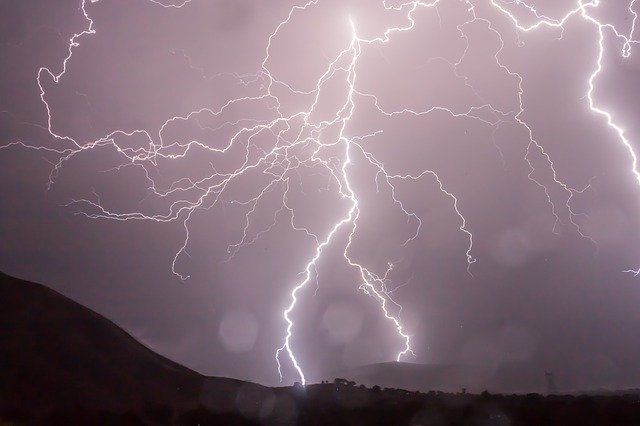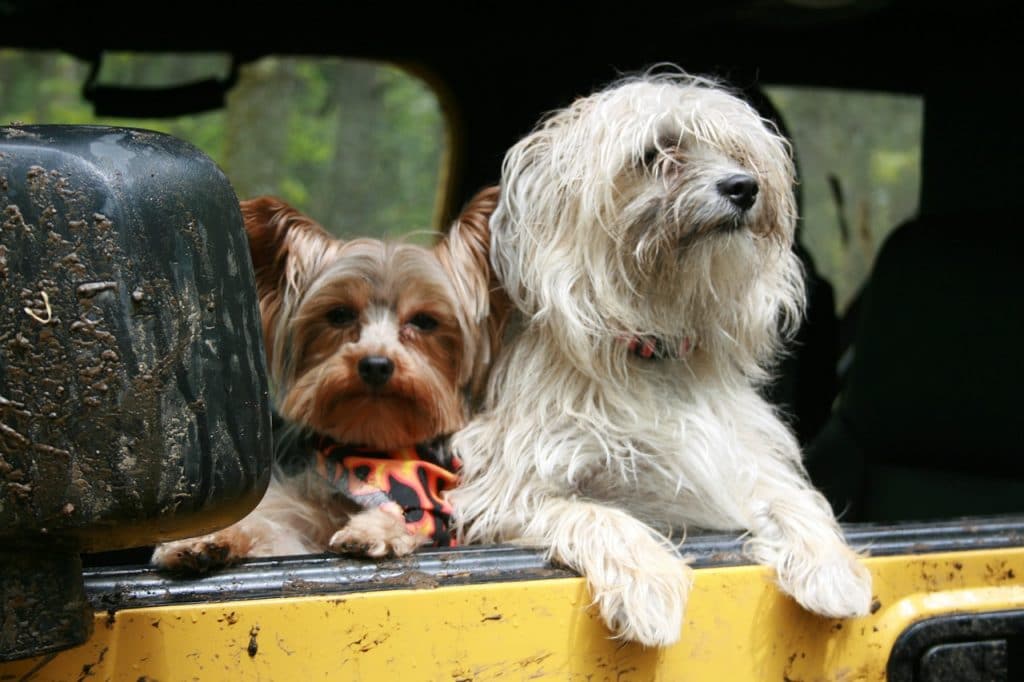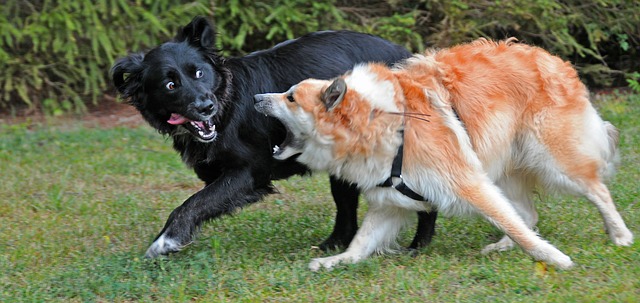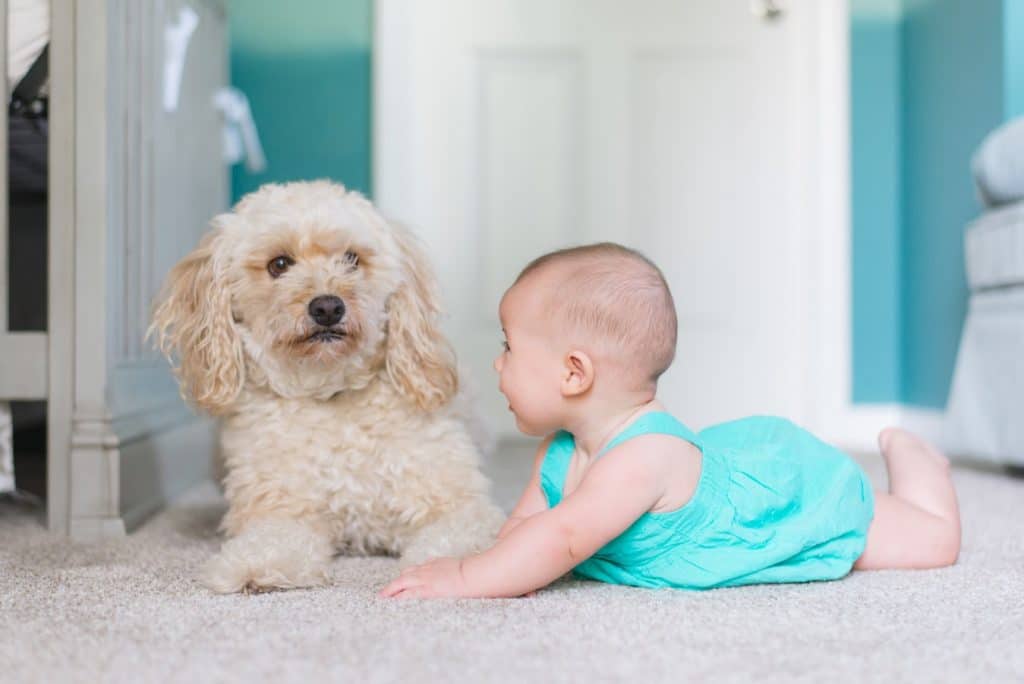![]()
HeelBoyHeel is reader supported. When you buy through any link on our site, we may earn an affiliate commission, but never at any extra cost to you.
Some dogs become panicked in certain situations. This can be just their personality, or can be triggered from a situation in their past.
And often when a dog is nervous, it means he feels threatened and can become unpredictable – and often his natural reaction will be to defend himself or protect his owner by fighting.
Whatever the reason, you need to do what you can to calm your dog’s fears as much as possible – for his sake, as well as for your own.
Here are a few things that might stress your dog – and simple ways you can avoid them.

Storms
Loud thunder, heavy rain and lightning scares many dogs. In fact, dogs can often feel a storm coming long before a human can, so might start showing signs of fear before any storm arrives.
They might run under furniture to hide or run through the house in a panic. If you dog shows these signs of anxiety, put him in his kennel until the worst of the storm is over.
You might want to try a thunder jacket, such as the ThunderShirt. Many dog owners swear by these vests, and most see reductions or complete elimination of dog anxiety symptoms with the very first use. With others, it may take two or three times using one of these jackets to see results.

Fireworks
More dogs run away on the Fourth of July than any other day of the year.
The loud noises are more than they can bear and they often bolt in fear. Other signs that your dog is scared of fireworks can include shaking, pacing up and down, excess barking, or panting heavily.
The best thing you can do is keep your dog inside as much as possible during the week of Independence Day and the same for New Year’s.
Don’t let him stay in the backyard. Dogs can jump a fence if they are scared enough – even one they normally would never be able to jump over.
Walk him during the day, not in the evening when you are much more likely to encounter fireworks.
Make sure you keep all doors and windows closed, and draw the curtains to make sure scary light flashes don’t frighten him.
And make sure you keep a good supply of water for him during the fireworks – excess panting can make a dog thirsty – and plenty of his favourite comfort toys.
Most important of all, reassure him and show him love – never be cross with your dog when he’s already feeling agitated.

Separation Anxiety
Dogs suffering from separation anxiety is very common because they are pack animals, and want to be with the leader of their pack all the time – that’s you. Dogs are social animals and they don’t like being home alone, especially for long periods of time.
If you dog suffers from separation anxiety, he will become anxious and agitated when left on his own. He will often bark much more than normal, may urinate or defecate inside even though fully house trained, and may chew furniture or damage other household items.
This is hard to deal with because it happens when you’re not home. Your neighbors may complain that your dog barks the entire time you’re gone.
There are a number of steps you can take to ease your dog’s separation anxiety.
- make sure you exercise him well before you leave
- do not make a big deal of leaving, just calmly leave
- if your dog becomes over-excited when you return, do not respond, ignore him until he calms down and then greet him in your normal way
- try dog calming pheromone kits, designed to help calm your dog and reduce separation anxiety when you are not there

Other Dogs
Some dogs simply hate other dogs. They are probably feeling fear and therefore act aggressive. This is often the case with small dogs. They’ll yap incessantly while a large dog just looks at them with confusion, as if to say, “What are you barking at?”
Try to slowly socialize your dog with other dogs. You might start with just visiting a friend or neighbor who has a dog. Never leave your dog unattended with another dog. Hold your dog at first until he calms down. Then try to put him on the floor but keep him on a leash.
Take your dog to obedience class. He’ll be exposed to other dogs and the teacher may be able to give you suggestions on training him to accept other dogs.
Visit a dog park where he’ll be around other dogs. Always keep him near you and on a leash.
Remember, that some dogs will always have a fear of other dogs. You can try to improve the situation but you might not be able to remove the fear completely.

Children
If you don’t have children in your house your dog is not used to being around them, then small children can seem threatening to dogs. They are not used to these little humans who are on the same level and can look them in the eye.
This fear is often justified. Small children like to grab at dogs and hug them too hard.
If young children are visiting your home, and you know your dog is scared of children, it’s a good idea to keep your dog safely in another room where he won’t be teased or loved too much.
A dog will snap if he thinks he’s being harmed or if his territory is being invaded.
Even though there are hundreds of videos on Facebook showing dogs playing with children and letting the children pull their fur, this is not always the case. Never take for granted that your new dog won’t snap at a child if he’s scared.
If you do have children you need to train them how to treat the dog – especially if you introduce a new dog into your house. When your children are toddlers it’s best to keep them away from the dog unless you’re nearby until they build you a good relationship.
And teach your children not to interfere with the dog’s food or try to take away his toys. Even the calmest dogs have boundaries, so need to be treated with a degree of caution.
Conclusion
I hope this article helped you understand some of the triggers for your dog’s anxiety, and how best to avoid them or deal with them.
If your dog shows extreme signs of anxiety and nothing you do seems to calm his fears, you should talk to your vet. Medications are now given to dogs as well as to people to help them deal with the stress that causes anxiety. But this is usually an extreme measure, and in most cases following these simple steps will men this is not necessary.